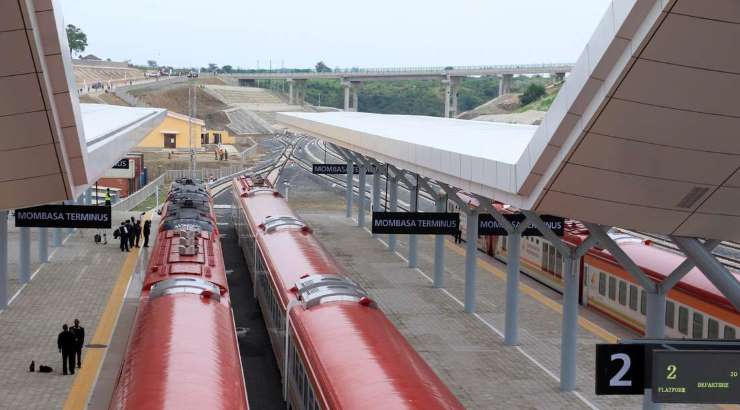Infrastructure
7 Benefits of Mombasa-Nairobi Standard Gauge Railway
The facility is expected to offer many economic and social benefits.

The Mombasa-Nairobi Standard Gauge Railway was inaugurated on 1 June 2017, which became a milestone in the history of transport infrastructure in Kenya.
The Mombasa-Nairobi SGR is 472.3 kilometres long – with 442.6 kilometres running at grade and the remaining 29.7 kilometres comprising the total bridge length.
The entire railway project cost Sh327 billion, 90% of which was financed by the China Exim Bank, with Kenya financing the remaining 10%.
Designed with a structural axle load of 25 tonnes, this railway can move up to 22 million tonnes of cargo per year operating at 80-100 km/h for freight and 120 km/h for passengers.
Here are the top benefits of the railway:
Port decongestion
- The cargo trains under SGR provide a fast, efficient, and reliable mode of transport. They have, therefore, helped decongest the port of Mombasa.
- Ensures timely movement of goods from the port to the hinterlands, thus reducing delays.
Affordable freight
- The SGR reduces the cost of transporting cargo from Mombasa to the hinterlands.
- Cost savings with SGR cargo trains – Sh50,000 per container compared to Sh90,000 by road.
Economic growth
- The government expects Kenya’s GDP to grow by at least 1.5% during SGR operations.
- The anticipated growth is seen as a means to repay Chinese loans for the project.
RELATED: A to Z of Kenya Standard Gauge Railway
Smooth travel
- Quick and affordable travel contrary to the tedious bus rides from Nairobi to Mombasa.
- Wear and tear on highways will decrease, thus reducing road maintenance costs.
Accidents reduction
- Significantly reduces the number of heavy trucks on the road, thus offering a friendlier environment for human traffic.
- The potential reduction in traffic accidents is a notable societal benefit.
Industrial boost
- The standard gauge railway facilitates industrialization in three ways: provides cheaper transport, and promotes the growth of new industries to support and service the railway.
Environmental impact
- The railway reduces carbon emissions from cargo transportation, aligning with global efforts for sustainable and eco-friendly transportation solutions.
Challenges and Considerations:
Economic viability concerns
- A 2009 study questioned the economic viability of the SGR citing marginal benefits.
- Incentives for using the SGR for cargo transportation should be developed.
Cargo transport laws
- There is speculation about the enactment of laws to require some cargo to be transported via rail to reduce freight on the Mombasa-Nairobi highway.
World Bank study
- A 2013 World Bank study showed that the railway’s economic viability depends on attracting additional rail freight, highlighting the need to meet or exceed the recommended freight volume.














